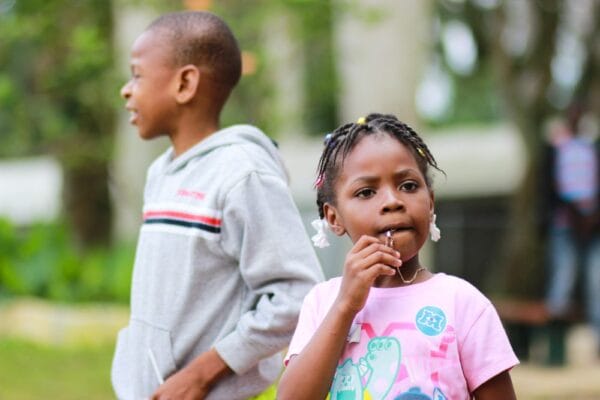Primary Custody vs. Full Custody: A Guide with Examples, Case Studies, and Statistics
Navigating the complexities of child custody can be a challenging process for parents. Two terms that often cause confusion are “primary custody” and “full custody.” Understanding the nuances between these types of custody is essential for parents who are in the midst of making critical decisions about their children’s futures.
The goal of this article is to demystify these terms and provide a clear understanding of primary custody vs. full custody, what they entail, and how they impact families. We will delve deep into what is primary custody, what is full custody, and whether primary custody is the same as full custody. This guide will also explore the different types of child custody, using relevant examples, case studies, and statistics to illuminate these concepts.

What is Primary Custody?
![]()
Primary custody refers to the arrangement where one parent is designated as the main caretaker and decision-maker for the child. This parent, often referred to as the primary custodian, is responsible for the day-to-day upbringing and welfare of the child. While the other parent, known as the non-custodial parent, may have visitation rights or parenting time, the primary custodian has the child for the majority of the time.
- Residential vs. Legal Custody: Primary custody can be further divided into primary physical custody and primary legal custody. Physical custody pertains to where the child lives, while legal custody involves decision-making power over the child’s education, healthcare, and general welfare.
- Sole vs. Joint Custody: Even within primary custody arrangements, there can be distinctions between sole custody (where one parent has both physical and legal custody) and joint custody (where both parents share legal custody, but one has primary physical custody).
What is Full Custody?
![]()
Full custody, often called sole custody, is when one parent has exclusive physical and legal custody of the child. In this scenario, the custodial parent has the full authority to make decisions about the child’s life without the input of the other parent. The non-custodial parent may have limited or no visitation rights, and in some cases, may be completely absent from the child’s life.
- Full Custody Scenarios: Full custody is typically granted in situations where one parent is deemed unfit due to reasons like substance abuse, incarceration, or a history of abuse or neglect. The court’s primary concern is the child’s best interest.
- Modification of Full Custody: Full custody is not necessarily permanent. Courts can re-evaluate and modify custody arrangements if there’s a significant change in circumstances, and the non-custodial parent can petition for visitation or shared custody if they can demonstrate a change in their situation.
Is Primary Custody the Same as Full Custody?
![]()
The terms primary custody and full custody are often used interchangeably, but they are not the same. Primary custody implies a primary caretaker but still involves the other parent in the child’s life, whereas full custody usually means that one parent has complete responsibility for the child. The key differences are in the level of involvement of the non-custodial parent and the division of decision-making authority.
- In primary custody, the non-custodial parent usually retains some form of visitation rights and may have a say in major decisions affecting the child’s life.
- In full custody, the custodial parent has exclusive rights and responsibilities regarding the child, with the non-custodial parent having little to no say or visitation rights.
Different Types of Child Custody
![]()
Understanding the different types of child custody is crucial for parents as they navigate the legal system. Here are the main categories:
- Legal Custody: This type of custody gives a parent the right to make major decisions about the child’s life, such as education, healthcare, and religious upbringing.
- Physical Custody: Physical custody determines where the child will live. The parent with physical custody provides the child’s primary residence and cares for their day-to-day needs.
- Sole Custody: Sole custody means one parent has either sole legal custody, sole physical custody, or both. It is often granted when the other parent is unable or unfit to care for the child.
- Joint Custody: Joint custody involves both parents sharing the responsibilities of raising the child. This can include joint legal custody, joint physical custody, or both.
- Split Custody: In rare cases, split custody occurs when each parent takes full custody of one or more children when there are multiple children involved.
Case Studies and Statistics: Primary Custody vs. Full Custody
![]()
Real-world examples and statistics can shed light on how primary custody and full custody play out in family courts:
- A case study may involve a parent with primary custody who successfully petitions for full custody after the non-custodial parent demonstrates repeated irresponsible behavior during visitation.
- Statistics show that courts are increasingly favoring joint custody arrangements, but primary custody is still common when parents cannot agree or when one parent is deemed unsuitable.
![]()
Understanding the distinctions between primary custody vs. full custody is vital for any parent going through a separation or divorce. While they may sound similar, they have significant legal and practical differences that affect the roles both parents play in their children’s lives. Primary custody allows for shared parenting responsibilities, even if one parent has the child most of the time, whereas full custody can isolate one parent from the child’s upbringing. The ultimate goal in any custody decision is to serve the best interests of the child, ensuring they have a stable and nurturing environment to grow and thrive.
For parents facing these decisions, it’s essential to consult with legal professionals and consider all factors, including the child’s needs, each parent’s capabilities, and the potential for co-parenting. By understanding the different types of child custody and the implications of each, parents can work towards arrangements that support their child’s well-being and maintain healthy family dynamics post-divorce or separation.





